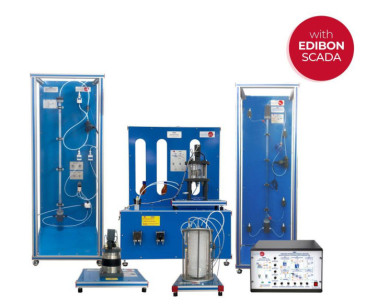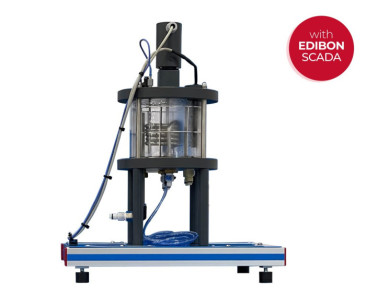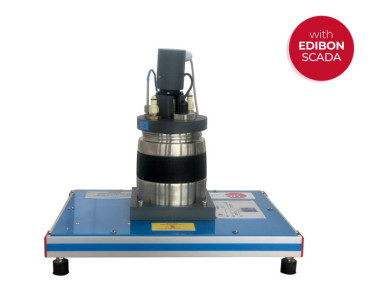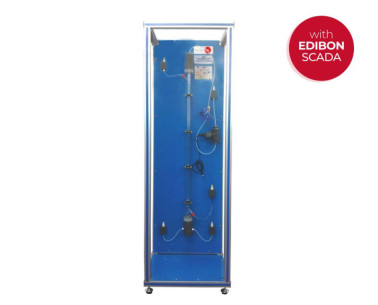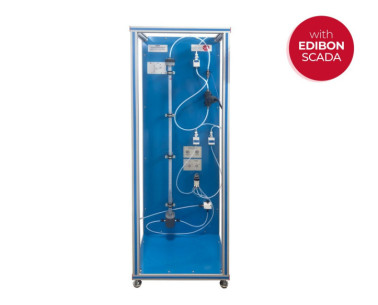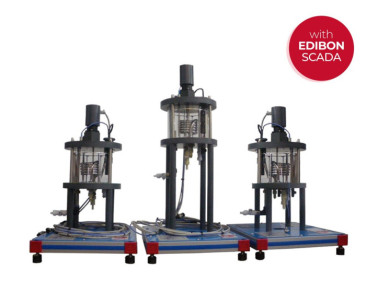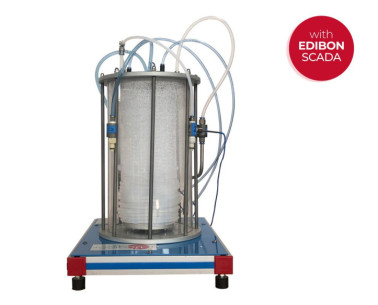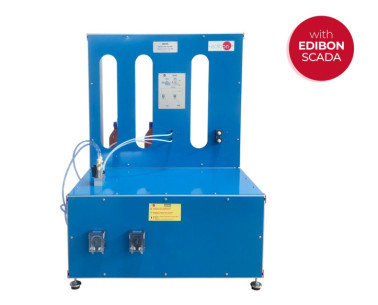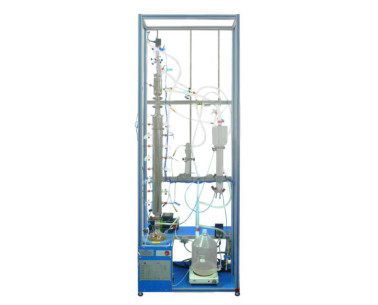The Flow Channels, ,CFG,, are hydrodynamic channels to perform multiple hydraulic tests. They consist of a rectangular section channel with tempered glass transparent walls through which water flows. Water is impelled by a pump from the storage tank and driven to the inlet tank through the pipe. In the inlet tank there is a flow stilling device that allows for performing different experiments without hydraulic disturbances. Afterwards, water flows through the channel and is discharged into the reception tank, finally returning to the storage tanks and completing the closed circuit.
1110 CHEMICAL ENGINEERING.Basic Module
SISTEMAS INOVADORES
The Flow Channels, ,CFG,, are hydrodynamic channels to perform multiple hydraulic tests.
Expansões
Descrição Geral
EXERCÍCIOS E PRÁTICAS GUIADAS
EXERCÍCIOS PRÁTICOS GUIADOS INCLUÍDOS NO MANUAL
- Measurement of water level and speed along the channel.
- Flow rate measurement using sharp-crested weirs.
- Flow rate measurement through changes in the channel section.
- Flow rate measurement using Venturi flume.
- Flow rate control using gates.
- Level control using syphons.
- Flow over overflow weirs.
- Flow between the piers of a bridge.
- Connection of a channel to a culvert.
- Characterization of the hydraulic jump.
- Profiles of the water free surface.
- Manning coefficient calculation for channels with sedimentation.
- Comparison of the discharge coefficient in gates with or without sedimentation.
- Simulation of the effect of the piers of a bridge in a channel with sediments.
- Study of turbulences using ink.
- Visualization of the transitions of the sediments on the bed when abrupt discharges are generated.
- Dependence of the sediments shape on the flow rate variation.
- Study of the sediments transport and settling mechanisms.
EXERCÍCIOS MAIS PRÁTICOS A SEREM FEITOS COM A UNIDADE
- Investigation of currents and torrential floods states.
- Water levels measurement.
- Discharge process in a submergible spillway.
- Pressure drop in open channels.
- Operation and study of a syphon.
- Flow and discharge coefficient of a syphon.
- Flow in pipes.
- Comparison between overflow and syphon.
- Study of the amplitude of the hydraulic jump.
- Generation of different flow states using an underwater dam.
- Study of the discharge processes under an adjustable weir:
- Study of alternating changes during the discharge.
- Relationship between backwater level and discharge level.
- Study of discharge under a radial gate:
- Study of alternating changes during the discharge.
- Hydrostatic pressure on a weir.
- Study of waves.
- Behaviour of structures under swell conditions (in rough sea).
- Application and understanding of Manning formula.
- Study of subcritical and supercritical flows.
- Learning how to apply the force, momentum and energy equations in typical situations.
- Study of the transition from flowing current to accelerated current.
- Calculation of the water flow.
- Use of the limnimeter
EQUIPAMENTOS COMPLEMENTARES
Reator Contínuo de Tanque Agitado para QRC, Controlado por Computador (PC)
Reator Descontínuo para QRC, Controlado por Computador (PC)
Reator de Fluxo Laminar para QRC, Controlado por Computador (PC)
Reator de Fluxo Pistão para QRC, Controlado por Computador (PC)
Reatores de Tanque Agitado em Série para QRC, Controlados por Computador (PC)
Reator de Fluxo Tubular para QRC, Controlado por Computador (PC)
Unidade Base e de Serviço para QRC
Equipamento de Destilação Contínua, Controlado por Computador (PC)
Qualidade

Serviço pós-venda

 Preferências de cookies
Preferências de cookies






